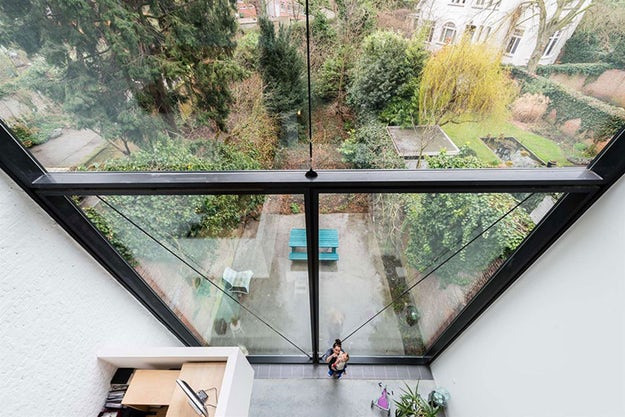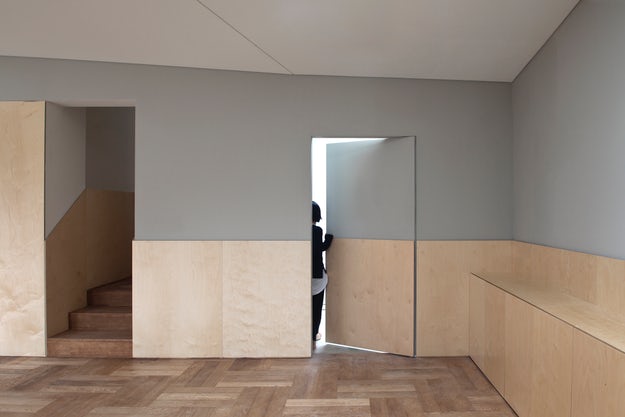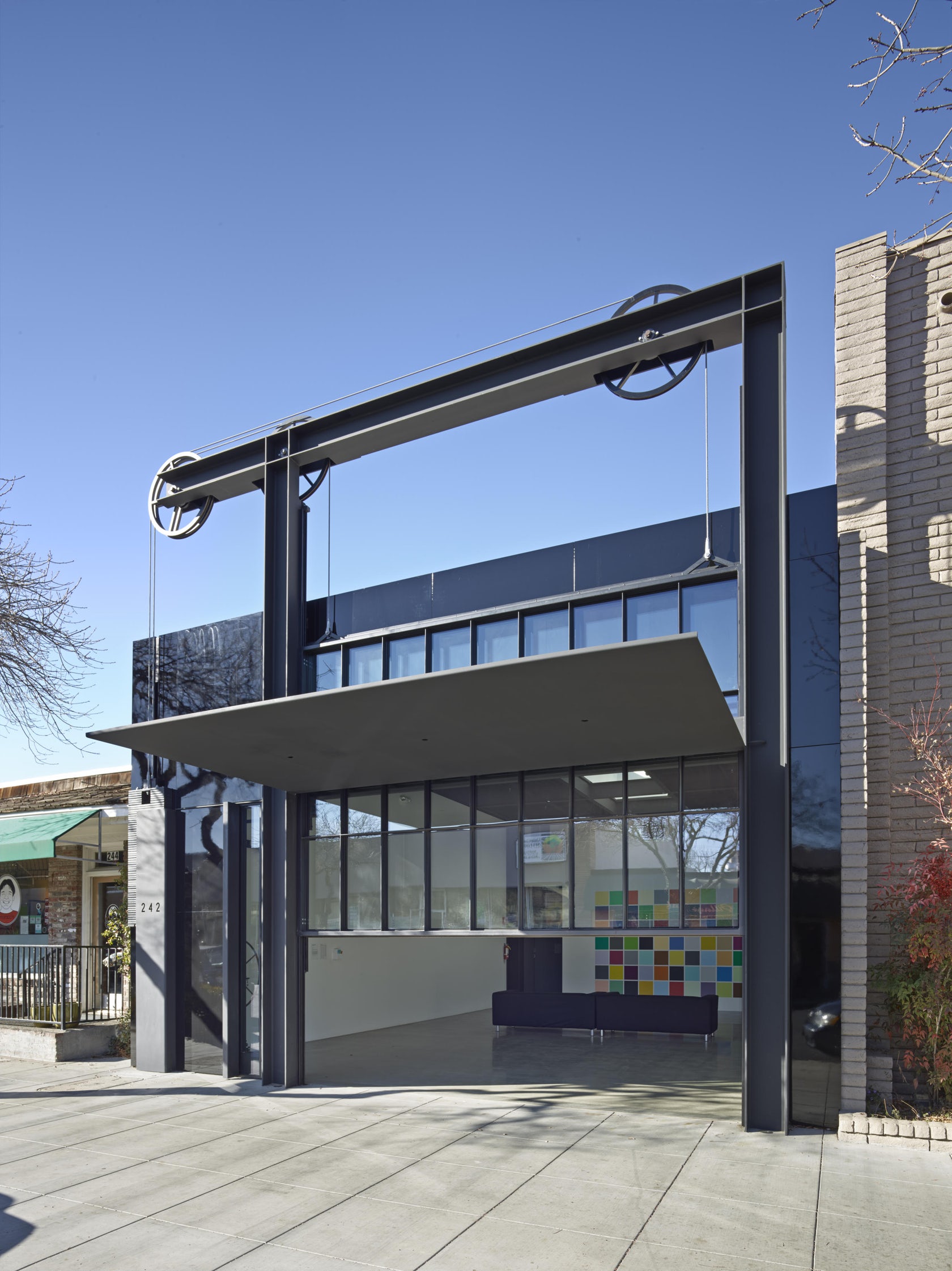Architizer's A+Product Awards is open for submissions, with the Extended Entry Deadline fast approaching on Friday, February 23rd. Get your products in front of the AEC industry’s most renowned designers by submitting today.
We use doors every day, but we almost never think about them. How many doors do you open without considering the centuries of technological development that resulted in the modern hinge, the ergonomic care put into designing a handle or the delicate finesse with which the door was hung? There’s a lot going on behind this elemental building component, and there’s a lot that architects need to consider.
Every kind of door has different challenges and opportunities. Often afterthoughts to larger ideas about massing, materials and plan layouts, doors rarely get the chance to sing as design objects, but when designers harness their power, there’s enough in these humble instruments to produce symphonies.
As is the case with a lot of building-products, the simplest ones are often the most complicated. A frameless and hingeless door might not look too complex, but underneath that clean exterior is a menagerie of mechanisms and channels, all carefully orchestrated to make themselves completely invisible.

Pivot door by Anyway Doors made from black anodized aluminium and tempered glass; Image via Anyway Doors
Materials
So what are most doors made of? Solid wood, solid core and hollow core are some of the most common materials used for interior applications while exterior doors are often made of wood, steel, aluminum and fiberglass-composite.
Interior Applications:
- Solid Wood: Solid wood doors are extremely sturdy and weather very well. While it is often the most expensive option, many buyers consider solid wood to be of good value due to its long-lasting composition. Solid wood interior doors also offer great insulation and act as a natural sound barrier.
- Solid Core: Solid-core doors are made from plywood or molded composite exterior, with a filled-wood-fiber interior. Solid-core doors generally look and feel similar to that of a solid wood door, maintaining the same aesthetic quality while offering good insulation and sound barrier between rooms. However, they are more likely to expand and contract with rising heat and moisture levels, which may present an issue depending on where your project is located.
- Hollow Core: Generally the least expensive option, hollow core doors are constructed from a wooden frame, plywood or hardwood surface and filled with rigid cardboard to maintain their shape. They are not as durable or fire-resistant as the solid doors. Not surprisingly, the acoustic performance is also weaker. A benefit of hollow core doors is that they do not warp with humidity.

James River House by ARCHITECTUREFIRM; Series 600 Multi-Slide Door by Western Window Systems
Exterior Applications:
- Solid Wood: Common among exterior applications, solid wood doors offer great versatility and opportunities for customization. Natural-finish stock and custom wood doors come in oak, cherry, walnut, mahogany, maple, fir and pine. You’ll also find paint-grade doors in several softwood varieties, such as pine and western hemlock. Many stock wood doors are a sandwich of wood-veneer skins and an engineered-wood core, which helps minimize warping.
- Steel: Steel is the best option when security and durability are top concerns in your design. Steel doors are stronger than wood and fiberglass doors, and neither crack nor warp. All steel doors have an inner frame made of either wood or steel. The cavities within this frame are filled with high-density foam insulation.
- Aluminum: Aluminum doors come in a huge variety of styles and colors, with smooth or wood-grain finishes. Additionally, they have an enamel finish, which means that the door will not rust or require maintenance.
- Fiberglass-Composite: Tough and maintenance-free, fiberglass-composite doors are a smart choice for harsh or humid climates. They mimic the look of wood with wood-grain texturing and can be stained to match oak, cherry, walnut and a variety of other woods. Beneath their molded surface is a framework of wooden stiles and rails, including wood edges for the lockset. Voids in the framework are filled with polyurethane-foam insulation.

Atrium House by Fran Silvestre Arquitectos; Sliding doors and invisible frames by Vitrocsa
Aesthetics
Door Type: There are many different types of doors, which should be chosen based on material preference, operating type and safety considerations. Here some of the most common types, as well as whether they are typically used in interior or exterior applications. Some of the most common types include french, bi-folding, pivoting, revolving, sliding and automatic doors.
Dimensions: Always specify the height, width and desired thickness of your door. It is also important to note that by ADA standards, doors must have a width-clearance of at least 32-inches.
Stains: Stains are available in a variety of colors and are most commonly used for solid wood doors since they emphasize the wood grains. Depending on the type of door material you have selected, ask your manufacturer for recommendations on the most appropriate stains.
Paint: Some door products come with a layer of primer already on, making them a perfect canvas for a paint job. Ask your manufacturer what type of paint they recommend, based on the door you have selected.
Hardware: Door hardware parts, including door knobs, deadbolts, hinges and knockers, are offered in many finishes such as brass, bronze, pewter, chrome, nickel and black. For added depth, you can also consider one with a distressed, oil-rubbed, matte, satin, aged or antique finish.
Door Frames: A sometimes overlooked component is the door frame, which is a crucial factor for both safety measures and thermal performance. Common materials include vinyl, wood, fiberglass, metal and composite frames.
Trims: Trims and moldings can transform a door into the focal point of your design. However, if you are working within an already striking space, with vaulted ceilings for example, it may be best to opt for simple, clean trims that create a modern aesthetic.
Performance
Security and Privacy: If security is a concern, consult with your manufacturer as there may be systems available to increase the door’s performance using alarms, lights and high performance locks.
Fire Resistance: Fire resistant doors typically receive 90, 60, 45 or 20-minute ratings. Fire resistant door materials may vary from steel to MDF, and can be customized to fit the desired aesthetics of your projects.
Energy Efficiency: A door typically has less glass and a higher glass-to-frame ratio than windows, so it inherently carries more insulation properties than windows. For exterior doors, such as patio doors and other sliding varieties, always check the insulation level of the glazing with the manufacturer.
Case Studies
How to Detail a Perfectly Seamless Door
The term “hidden door” conjures up visions of secret rooms behind movable bookcases or even a fantastical universe revealed through a secret wardrobe. But the reality is that hidden doors — at least the kinds that are popping up in popular architectural projects outside of fiction novels and films — are much more sleek and sophisticated.
Secret Portal: 6 Ways to Create Imperceptible Hidden Doors
Like windows to a façade, doors are disruptions to a wall. After going to great lengths to craft a smooth yet robust wall, piercing it with a door can create an immediate eye sore. But not always. The architectural fascination with creating perfectly hidden doors has resulted in designs that gracefully disappear into walls. Easily mistaken for seamless cabinets or, more excitingly, a portal to an alternate world, the following designs feature skilfully integrated invisible doorways.

Sonoma Connect 5 by Connect Homes; Sliding Doors by Western Window Systems
Slip and Slide: 7 Stunning Ways to Implement Sleek Sliding Doors
How many sliding doors do you glide through in any given day? The answer is likely more than you are cognizant of. Including bedroom doors, elevator doors, subway train doors and beyond, they act as seamless gateways through which humans transition from one programmatic space to another. In addition, like the drawers of a building, they help us understand and compartmentalize what we do, when we do it and where we do it.

Townhouse addition by Sculp[IT]Architects
If you’re thinking of a employing large format door in a project but unsure on the options available, look to the following case studies for inspiration. It goes to show that, at least sometimes, good things come in big packages.
Architizer's A+Product Awards is open for submissions, with the Extended Entry Deadline fast approaching on Friday, February 23rd. Get your products in front of the AEC industry’s most renowned designers by submitting today.











 242 State Street
242 State Street  Atrium House
Atrium House  Barnham Road
Barnham Road  Garage Museum of Contemporary Art
Garage Museum of Contemporary Art  James River House
James River House  Maida Vale soft apartment
Maida Vale soft apartment  Sonoma Connect 5
Sonoma Connect 5  Villa Roces
Villa Roces 


